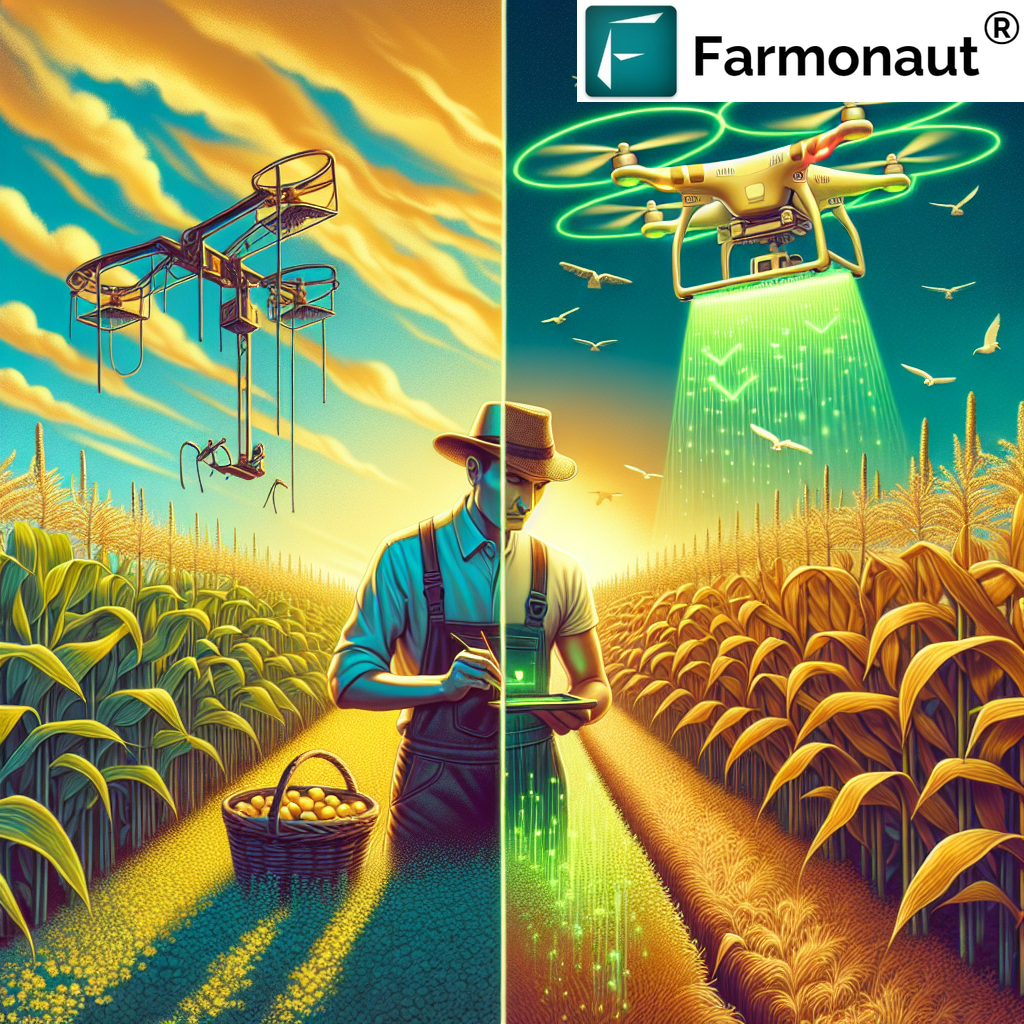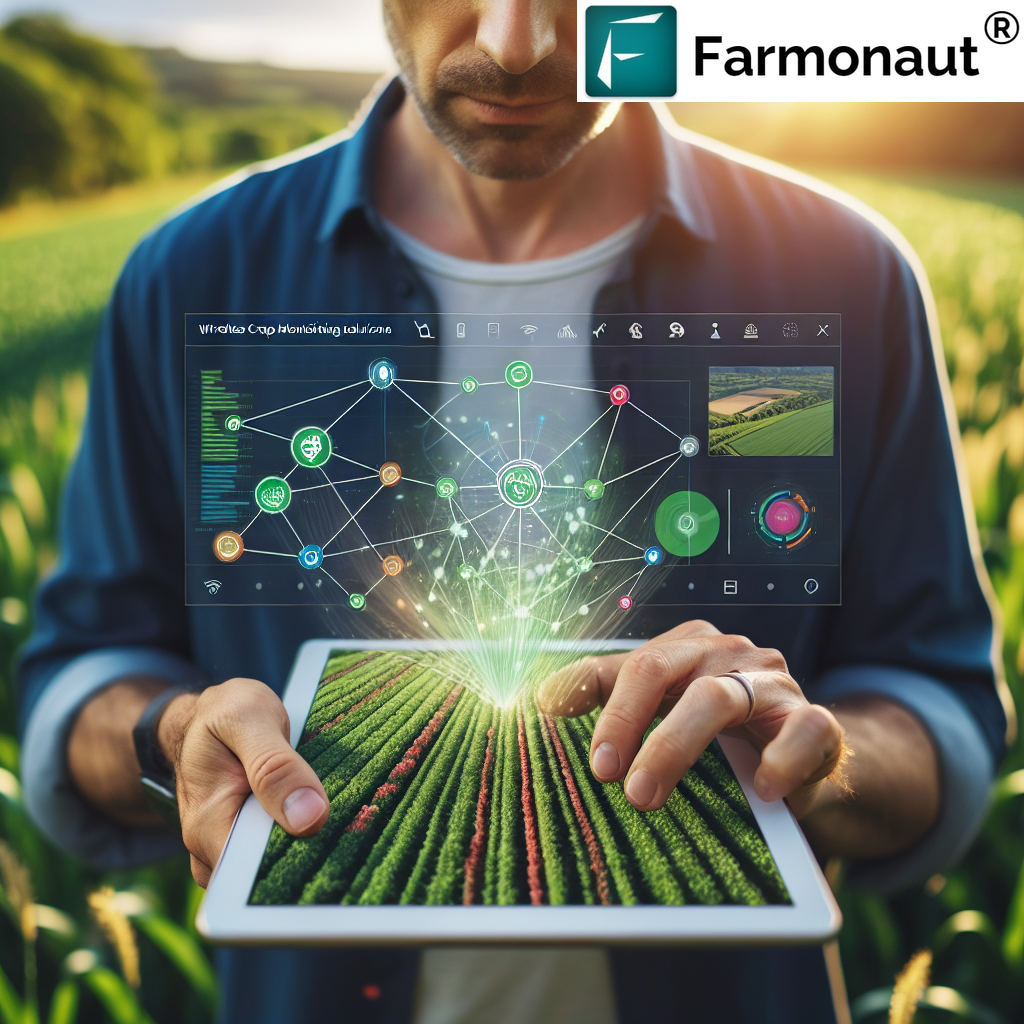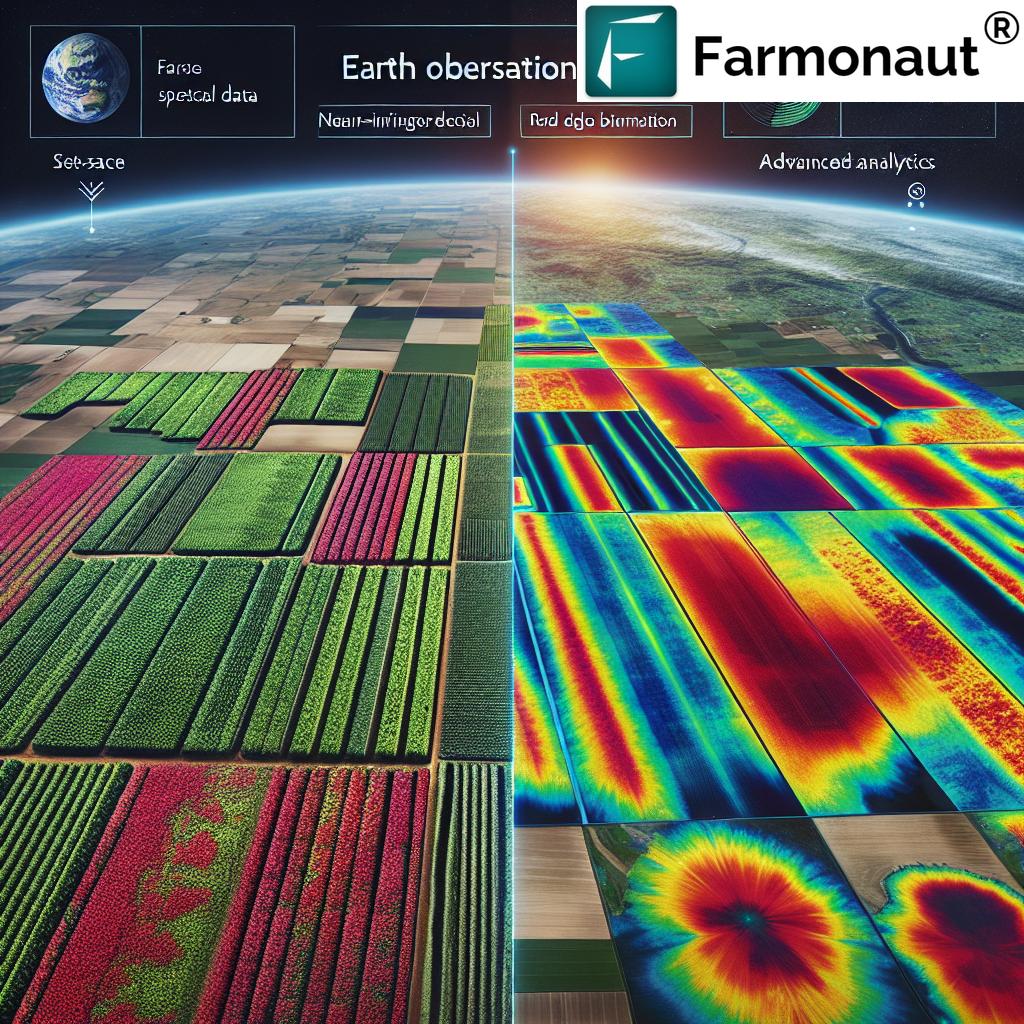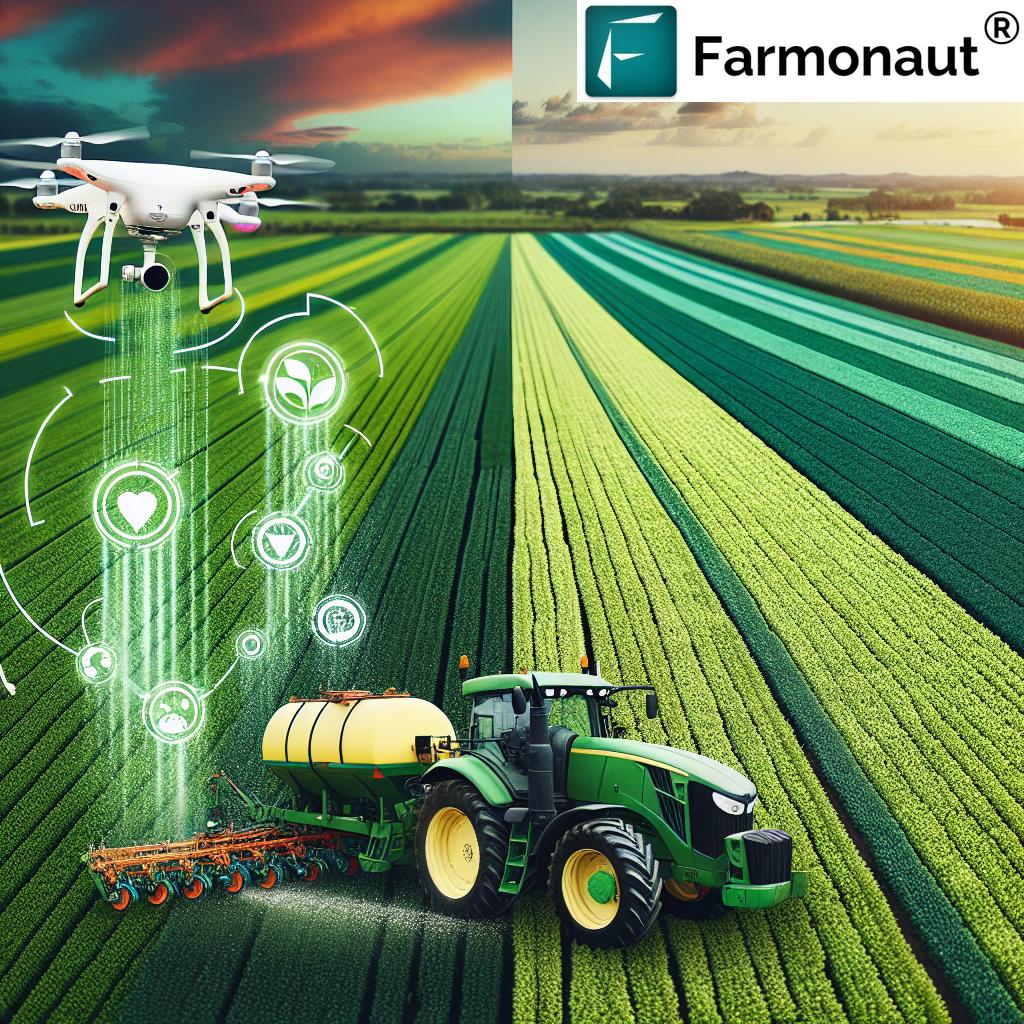
Maximizing Crop Yield: From Barsam to Cash Crop 6.0 – Essential Monitoring and Measurement Techniques
In the ever-evolving world of agriculture, staying ahead of the curve is crucial for farmers and agribusinesses alike. At Farmonaut, we understand the importance of leveraging cutting-edge technology to enhance crop productivity and sustainability. In this comprehensive guide, we’ll explore various aspects of modern farming, from traditional crops like barsam to advanced concepts like Cash Crop 6.0, and dive deep into essential monitoring and measurement techniques that can revolutionize your agricultural practices.
Understanding the Evolution of Crop Management
The journey from traditional farming methods to modern, technology-driven agriculture has been nothing short of remarkable. Let’s take a closer look at this evolution:
1. Traditional Farming and Barsam Crop
Barsam crop, a traditional crop in certain regions, has been cultivated for generations using time-honored techniques. However, as with many traditional crops, barsam cultivation faces challenges in the modern agricultural landscape. These challenges include:
- Limited yield potential
- Susceptibility to pests and diseases
- Inefficient resource utilization
- Lack of precise monitoring capabilities
While traditional crops like barsam hold cultural and historical significance, there’s a growing need to integrate modern farming techniques to enhance their productivity and sustainability.
2. The Rise of Precision Agriculture
As technology advanced, precision agriculture emerged as a game-changer in the farming industry. This approach utilizes data-driven insights to optimize various aspects of crop production, including:
- Soil management
- Irrigation
- Fertilizer application
- Pest control
Precision agriculture laid the foundation for more advanced concepts like Cash Crop 6.0, which we’ll explore in detail later in this article.
3. The Advent of Cash Crop 6.0
Cash Crop 6.0 represents the latest evolution in agricultural technology, combining advanced monitoring systems, artificial intelligence, and sustainable practices to maximize crop yields while minimizing environmental impact. This concept goes beyond traditional cash crops, encompassing a holistic approach to farm management.
Essential Monitoring Techniques for Modern Agriculture
To truly harness the power of modern agriculture, farmers need to employ a variety of monitoring techniques. Let’s explore some of the most crucial ones:
1. Satellite-Based Crop Monitoring
At Farmonaut, we specialize in satellite-based crop monitoring, which offers numerous advantages over traditional methods:
- Real-time vegetation health tracking using NDVI (Normalized Difference Vegetation Index)
- Large-scale coverage without the need for on-ground equipment
- Regular updates on crop growth and potential issues
- Cost-effective solution for farms of all sizes
Our satellite monitoring system provides farmers with invaluable insights into their crops’ health and growth patterns, enabling timely interventions and optimized resource allocation.
2. Wireless Crop Monitoring Solutions
Wireless crop monitoring solutions have revolutionized the way farmers track and manage their crops. These systems typically include:
- Soil moisture sensors
- Weather stations
- Crop growth sensors
- Pest detection devices
By leveraging wireless technology, farmers can access real-time data from various points in their fields, allowing for more precise decision-making and resource management.
3. Drone-Based Monitoring
While not as comprehensive as satellite monitoring, drones offer certain advantages for specific monitoring needs:
- High-resolution imagery for detailed crop inspection
- Flexibility in monitoring frequency
- Ability to capture data in cloudy conditions
However, drones have limitations in terms of coverage area and operational costs, making them less suitable for large-scale monitoring compared to satellite-based solutions.
4. IoT-Enabled Sensors
Internet of Things (IoT) sensors play a crucial role in modern crop monitoring. These devices can measure various parameters such as:
- Soil pH
- Nutrient levels
- Air temperature and humidity
- Light intensity
By connecting these sensors to a centralized system, farmers can gain a comprehensive understanding of their field conditions and make data-driven decisions.
How Farmonaut’s Satellite System Compares to Drone and IoT-Based Monitoring
| Feature | Farmonaut Satellite System | Drone-Based Monitoring | IoT-Based Monitoring |
|---|---|---|---|
| Coverage Area | Large scale (hundreds to thousands of hectares) | Limited (typically less than 100 hectares per flight) | Depends on sensor placement (usually localized) |
| Frequency of Updates | Regular (every 3-5 days) | As needed (limited by operational constraints) | Continuous (real-time) |
| Initial Setup Cost | Low (subscription-based) | High (equipment purchase required) | Medium to High (depends on number of sensors) |
| Operational Complexity | Low (cloud-based system) | High (requires trained operators) | Medium (requires maintenance of sensor network) |
| Data Analysis | Advanced AI-powered analytics | Varies (depends on software used) | Typically basic analytics |
| Weather Dependency | Minimal (can penetrate clouds) | High (affected by wind and rain) | Low (mostly weather-independent) |
As you can see, Farmonaut’s satellite-based system offers distinct advantages in terms of coverage, cost-effectiveness, and advanced analytics capabilities.
Measuring and Calculating Crop Yield
Understanding how to measure and calculate crop yield is crucial for evaluating the success of your farming practices and making informed decisions for future seasons.
How is Crop Yield Measured?
Crop yield measurement involves several methods, depending on the crop type and the scale of the operation:
- Sampling Method: This involves selecting representative areas of the field and harvesting them to estimate the yield of the entire field.
- Whole Field Harvest: The entire crop is harvested, and the total yield is measured.
- Yield Monitors: Modern harvesting equipment often includes yield monitors that measure crop flow and moisture content in real-time.
- Remote Sensing: Satellite and drone imagery can be used to estimate yield based on vegetation indices and crop health indicators.
How to Calculate Crop Yield
Calculating crop yield typically involves the following steps:
- Determine the total harvested weight of the crop.
- Measure the moisture content of the harvested crop.
- Calculate the dry weight by adjusting for moisture content.
- Divide the dry weight by the area harvested.
The general formula for crop yield is:
Crop Yield = (Total Harvested Weight * (100 – Moisture %) / 100) / Area Harvested
For example, if you harvested 10,000 kg of wheat from a 2-hectare field, and the wheat had a moisture content of 14%, the calculation would be:
Crop Yield = (10,000 kg * (100 – 14) / 100) / 2 hectares = 4,300 kg/hectare
Advanced Concepts in Modern Agriculture
Indice Crop Analysis
Indice crop analysis refers to the use of various vegetation indices to assess crop health and predict yield. Some common indices include:
- NDVI (Normalized Difference Vegetation Index)
- EVI (Enhanced Vegetation Index)
- SAVI (Soil Adjusted Vegetation Index)
These indices provide valuable insights into crop vigor, stress levels, and potential yield, allowing farmers to make data-driven decisions throughout the growing season.
Verify Crucial Crop Stages
Verifying crucial crop stages is essential for timely interventions and optimal resource allocation. This process involves:
- Identifying key growth stages for each crop type
- Monitoring crop development using satellite imagery and ground-level observations
- Comparing actual growth patterns with expected timelines
- Adjusting management practices based on observed deviations
By accurately verifying crucial crop stages, farmers can optimize their inputs and maximize yield potential.
Voice Crop Technology
Voice crop technology is an emerging field that combines voice recognition and agricultural management. This innovative approach allows farmers to:
- Access crop information and recommendations through voice commands
- Report field observations and issues using voice notes
- Receive audio alerts for critical crop events or weather conditions
While still in its early stages, voice crop technology has the potential to significantly streamline farm management processes and improve accessibility for farmers.
Farmonaut’s Comprehensive Agricultural Solutions
At Farmonaut, we’re committed to providing cutting-edge solutions that empower farmers and agribusinesses to thrive in the modern agricultural landscape. Our suite of services includes:
- Satellite-based crop health monitoring
- AI-powered advisory system (Jeevn AI)
- Blockchain-based product traceability
- Fleet and resource management tools
- Carbon footprint tracking
To learn more about our services and how they can benefit your agricultural operations, visit our app redirect page or explore our API documentation.
Download our mobile apps for on-the-go access to your farm data:
For developers interested in integrating our satellite and weather data into their own applications, check out our API developer documentation.
Subscribe to Farmonaut’s Services
Ready to take your farming operations to the next level? Subscribe to Farmonaut’s services using our convenient pricing table below:
Frequently Asked Questions (FAQ)
Q: What is the difference between traditional farming and precision agriculture?
A: Traditional farming relies on historical knowledge and general practices, while precision agriculture uses data-driven insights and technology to optimize every aspect of crop production, resulting in higher yields and more efficient resource use.
Q: How often does Farmonaut update its satellite imagery?
A: Farmonaut typically provides satellite imagery updates every 3-5 days, depending on the subscription plan and location.
Q: Can Farmonaut’s services be used for small-scale farms?
A: Yes, Farmonaut’s solutions are designed to be scalable and affordable, making them suitable for farms of all sizes, from small holdings to large commercial operations.
Q: How accurate are satellite-based yield predictions?
A: Satellite-based yield predictions have become increasingly accurate in recent years, with many studies showing correlations of 80% or higher between predicted and actual yields. However, accuracy can vary depending on factors such as crop type and local conditions.
Q: What types of crops can be monitored using Farmonaut’s system?
A: Farmonaut’s satellite monitoring system can be used for a wide range of crops, including cereals, fruits, vegetables, and cash crops. The system is adaptable to various crop types and growing conditions.
Conclusion
As we’ve explored in this comprehensive guide, the world of agriculture is rapidly evolving, with new technologies and methodologies constantly emerging to help farmers maximize their crop yields and operate more sustainably. From traditional crops like barsam to advanced concepts like Cash Crop 6.0, the integration of cutting-edge monitoring and measurement techniques is crucial for success in modern farming.
At Farmonaut, we’re proud to be at the forefront of this agricultural revolution, offering innovative solutions that empower farmers and agribusinesses to thrive in an increasingly complex and competitive landscape. By leveraging our satellite-based monitoring systems, AI-powered analytics, and comprehensive farm management tools, you can take your agricultural operations to new heights of productivity and efficiency.
We invite you to explore our services, try our mobile apps, and discover how Farmonaut can help you achieve your farming goals. Together, we can build a more sustainable and productive future for agriculture.













